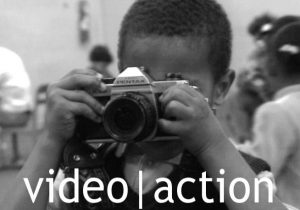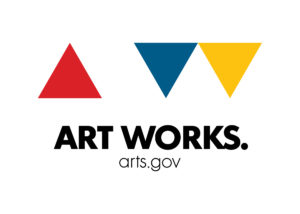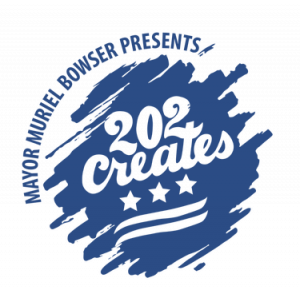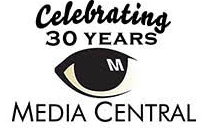Making Something Out of Nothing
Part Three: Visual Storytelling
Author: Dan Bailes, WIFV Member
This final blog in a three-part series will explore creativity, decision-making, and problem solving in the process of fashioning videos, with a focus on client work and web videos.
If you recall, this project about John’s “mission that matters” essentially had no visuals. But after editing the track and adding music we’re ready to turn our attention to telling the visual story… and fortunately, the DoD has a website full of images that can do the job.
<Insert PatrolD>
Before we get into specifics, let’s talk a moment about serendipity. I love the unplanned gifts that fall into your lap if you keep your mind open to the possibilities. Think about this – in trying to tell John’s story, the obvious thing would be to show him doing stuff… it would make the piece personal, but also small. Without those visuals (all we had were 2 shots of him walking in a hallway with a co-worker and a couple of shots of him sitting in an empty class room talking with two co-workers – boring) I had to look elsewhere. So, thanks to a little serendipity, what I found at the DoD Iraqi Freedom site allowed me to elevate his small story to a much higher plane. What I’ve learned as a storyteller is this: whenever you have an opportunity to focus on the big picture, do it.
Now I probably looked at 2000 images to find the best ones for the piece. Most were shot for PR reasons and weren’t in keeping with the story John was telling. Of the ones that were interesting or had a sense of authenticity, only a few were really excellent and on target.
<Insert PatrolH>
So let’s talk about what makes a “good” image. Context is key, of course, because the answer to what is “good” depends on the big picture – who is your audience, what’s the message and what are you trying to accomplish. In this case, we need to answer these questions:
- What is the show about?
- How is the image speaking to you? Do you feel anything?
- How does the image work with the message and what’s being said?
More about images:
Of course you should consider composition, framing, etc. Also look at body language, facial expressions and perceived context. As a rule, a more abstract image will do a better job with the words. Images shouldn’t illustrate (as in a newscast or slideshow) – but amplify.
More to the point, the images should work with John’s ideas rather than illustrate what he’s saying – a subtle, but important difference. Ultimately, the images should make you “feel” as opposed to “see” what John is saying. Take this image for example:
< Insert a1>
This is a great photo… terrific framing, puts you right in the action… but doesn’t work for John’s story. It needs to be moody, especially in the beginning. After all, we’re talking about troops who’ve gone missing.
< Insert a2>
Also a great photo. Very evocative of war, but also removed from the action – and it makes you feel removed, too. Since it feels like the helicopter is literally above it all… another candidate for the reject pile.
Take a look at the next three. Which one is more on target?
<Insert aim1>
Excellent photo and you can only imagine what it took to get this shot. But the focus is on the person who surrendered… so a reject.
<Insert aim2>
Another excellent photo. What’s behind the door? It has its own suspense and I like it. But the troop is incidental to the mystery behind the door, making the next one a better choice.
<Insert aim3>
This one is so evocative… it feels authentic… what it must be like when everything is uncertain, with danger lurking just around the corner. I like that the focus is on the man with the gun, yet there’s something tentative about him. Or at least it feels that way to me… a keeper.
I also wanted to use images of troops isolated from their unit. Compare the first two images.
<Insert alone1>
This is perfection. Some soft focus in the foreground, the man is clearly off by himself. Look at his expression… it could be fear, worry or concern. It’s certainly an uncomfortable moment and you sense that he feels quite alone.
<Insert alone2>
Well-framed image but the troop looks like he’s just doing his job. No sense of danger or dread. Now look at the next two.
<Insert alone5>
Like the previous image, the man looks alert but calm, almost like he’s aware of his picture being taken… and the image doesn’t convey much emotion.
<Insert alone7>
This one feels classic. Definitely implies a sense of danger and wonder. I love the framing, all that dark negative space on the left adds to the gloom and sense of dread. A fantastic image for the piece.
Later on there’s a line that John delivers about leaving no one behind. And there were two options I found for showing a wounded warrior. They’re both pretty classic.
<Insert wounded1>
While this picture is well-composed and clear, it’s much more of an illustration. It’s very factual, and could even be posed. It also feels pretty static. But look at the next one.
<Insert wounded2>
This is also a classic, but full of action. And given the troop on the right with the weapon, it implies a sense of danger and is much more intense… a keeper.
There were a number of images of troops on patrol. Compare the first two, which could be mirror images of the same event.
<Insert stairs1>
This shows troops about to bust into the abandoned building. Even though it’s an action image, there’s something that feels static and perhaps posed. It’s more like a news photo, telling you this action is taking place. The net effect is I feel more like an observer than a participant… and the sense of distance takes away from the emotion.
<Insert stairs2>
I ended up zooming in tighter and cropping this image into a horizontal format. I like it because it has mystery and action. The troop’s body language is very active and the unyielding darkness is a great counterpoint. Who knows what he may run into?
<Insert stairs3>
While I went back and forth over this image, I ultimately rejected it for being too “perfect.” The composition is too studied and the troop’s body language doesn’t really show much tension. This is certainly a “good” photograph in that the exposure and framing are excellent… but if you want more of a documentary feel, you need to go with something that is less studied… and that can move the story along.
<Insert stairs4>
This image feels much more real… the background and foreground feel right. You sense that this used to be a dwelling or place of business… there used to be human activity here… and now, all that remains is a desolate byproduct of war. The silhouette effect works very well here.
There’s lots more I could discuss, but I’m sure you’d like to look at the finished video. You’ll see that the treatment of images was very straightforward. I didn’t want anything to distract from the overall impact of the piece. I certainly didn’t want people to say, oh, look at the cool treatment of the stills. Instead, the emotion should build to create a range of feelings that pay off in the end. The careful choice and placement of the still images makes that possible.
A good rule of thumb about how to approach your work is that if you have a good story, you don’t need to jazz it up with anything. Just let the piece unfold and you’ve got it made. I’d even go further and say if you jazz it up, you take away from the emotional impact, because you’re too aware of technique and that takes you out of the moment.
Two quick comments on the style and approach. The idea of fading the images in and out just came in a flash of inspiration. The overall effect makes you feel that you can just barely grab on to what you’re seeing before it vanishes into the fog of war. Stylistically it goes well with the dark mood of the opening, supports what John is talking about, and doesn’t intrude.
<Insert PatrolG>
The ending was a challenge. I couldn’t imagine what images would make sense or what I wanted to say with them. Also, John gets kind of jargon-y at that point, so I needed something to bring in emotion, because his words weren’t doing it. The solution came when I asked myself, “why are our troops there in the first place, or who are they doing this for?” The answer pointed the way to the ending, in terms of what images to use, and I looked for those moments to bring the piece to a higher level of emotion. They make everything pay off.
Remember, this is a client piece for a defense contractor. If it was for a anti-war organization, you’d use different images to create a different ambiance.
Here’s the final, and if you want to know anything else about how it was put together or the choices made, just shoot me an email.
[youtube http://www.youtube.com/watch?v=YNYHRTiFiPc?rel=0&w=560&h=315]
About the Author: Dan Bailes, WIFV Member
Expert at transforming complex issues into compelling stories, Dan Bailes began his career editing film and later video. He spent 15 years creating issue advocacy and marketing media for trade associations and corporations and political media for national and state-wide campaigns for both Republican and Democratic candidates. Dan also served as executive editor and writer on a seven-part international co-production exploring the economic and cultural development of emerging Asian nations. He’s made award-winning documentaries for PBS, trade associations and educational organizations, and was co-creator, co-producer and writer for Medical Economics Video Magazine, a quarterly program on the business and practice of medicine that aired on Lifetime Television.














